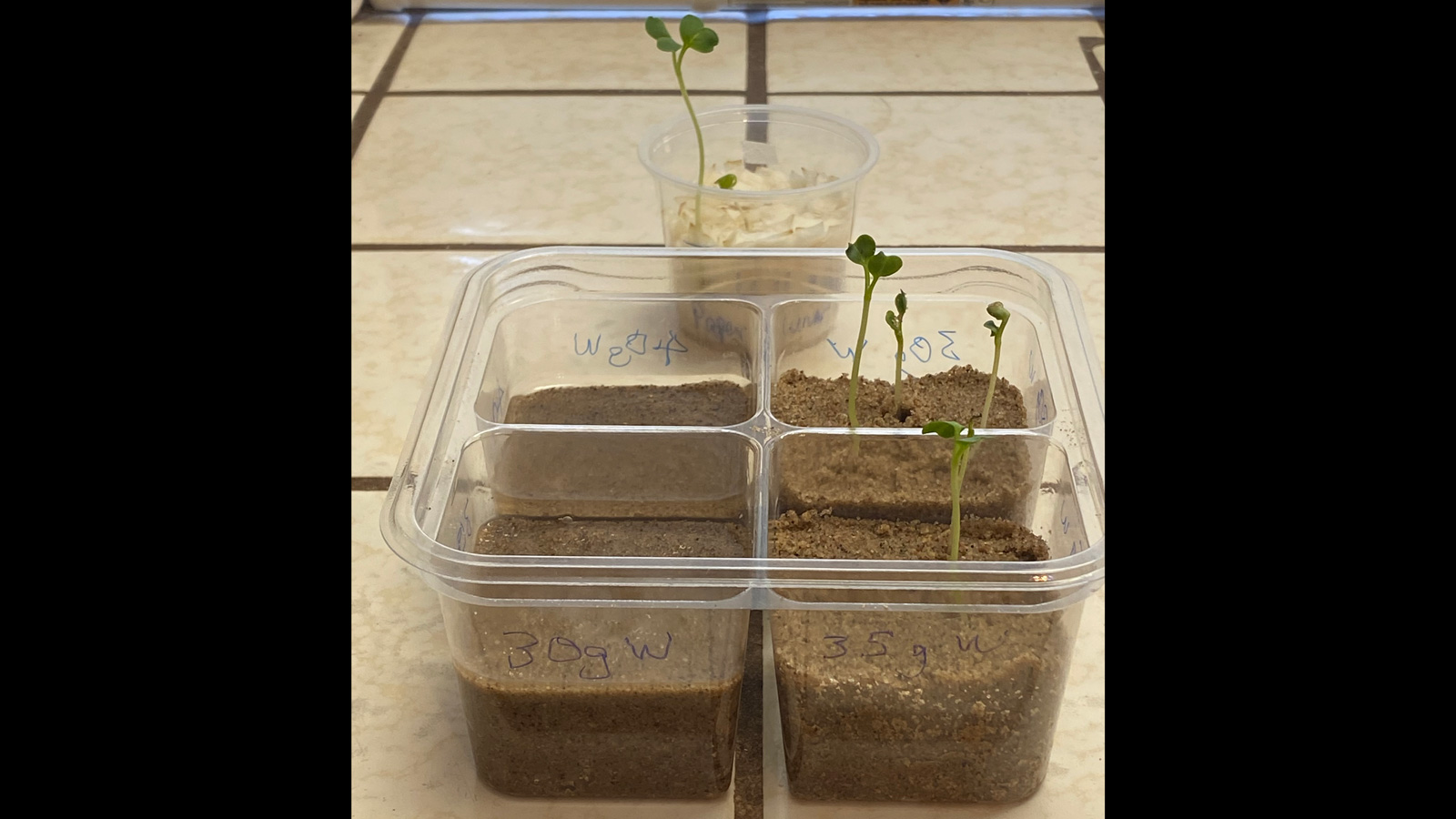Homebound NASA scientist grows radishes to practice for future moon farming
A NASA scientist is growing radishes at home to help future astronauts grow food on the moon.
For decades, scientists have been working to solve the problem of how future astronauts will eat on the moon or, one day, on Mars. From the earliest days of pre-packaged "space food" to modern food growing experiments aboard the International Space Station, researchers have made leaps and bounds in progress. Now, as many are staying at home during the COVID-19 pandemic, one NASA scientist has been growing radishes at home to learn more about how astronauts on the moon might one day grow their own food.
The experiment spawned from work conducted by a research team at NASA's Jet Propulsion Laboratory (JPL) which had spent over a year working to simulate lunar soil conditions on Earth to get a better idea of how future lunar astronauts may grow food. But just before the team was about to begin testing using sensors that might one day be a part of actual lunar missions, the coronavirus pandemic hit and the team was relegated to working from home.
Related: Space food evolution: How astronaut chow has changed (photos)
Then, during a remote video meeting, an idea sparked. The researchers were discussing how they might experimentally grow radishes, some in soil with no nutrients and some with minimal nutrients (to test the feasibility of growing radishes on the moon.) That's when team member NASA scientist Max Coleman felt a lightbulb go off.
"Let's not theorize about this; why don't we just do it!" Coleman exclaimed to the group on the video call. Coleman rushed to buy radish seeds online along with desert sand to begin some home-based radish experiments.
"Video chats clearly stimulate me," Coleman joked, according to a NASA statement. But the radish growing is more than a fun, at-home experiment.
Breaking space news, the latest updates on rocket launches, skywatching events and more!
Related: Space food photos: What astronauts eat in orbit
"We're trying to show astronauts can use horticulture to grow their own food on the moon," Coleman said in the statement. "We want to do one tiny step in that direction, to show that lunar soil contains stuff which can be extracted from it as nutrients for plants. This includes getting the right chemical elements to allow plants to make chlorophyll and grow cell walls."
So, why radishes? "They have been used before in space, and they germinate very, very fast," Coleman said in the statement. Also, because one lunar day lasts approximately 28 Earth days due to the moon's slow spin, radishes are a good fit because they sprout quickly so that the experiment could deliver results within one lunar day.
To grow these mock lunar radishes at home, Coleman first tried germinating radish seeds in damp paper towel pieces and, once the desert sand arrived, shifted to growing the seeds in the sand in a sandwich container with four sections. Coleman varied the amount of water he put in each section to see how little water they could get away with using, as water will be an especially precious resource on the moon.
Coleman additionally used chopsticks to make holes to plant the seeds, kitchen-counter "electrodes" to track moisture levels in the sand and aluminum foil to fold into a battery tester to test electrical resistance from the water.
That sort of innovation will be important for future lunar astronauts. "The more you can use what's already there, the more efficient you can be because you don't have to carry that much with you," Coleman said.
The desert sand in the do-it-yourself kitchen experiment isn't a perfect analog for lunar soil but that testing isn't possible on Earth quite yet, he said. "We're doing as much here as we can," Coleman said. "Then we want to show that it actually does work on the moon."
Coleman and his colleagues are working to develop an experiment that would fly to the moon and attempt to grow radishes in a chamber with real lunar soil, air and water, according to the statement. If this experiment were to launch, the researchers would add cameras to the experiment and make the images and data publicly available so that "kids of Earth can watch radishes grow on the moon," Coleman said.
Email Chelsea Gohd at cgohd@space.com or follow her on Twitter @chelsea_gohd. Follow us on Twitter @Spacedotcom and on Face

Chelsea “Foxanne” Gohd joined Space.com in 2018 and is now a Senior Writer, writing about everything from climate change to planetary science and human spaceflight in both articles and on-camera in videos. With a degree in Public Health and biological sciences, Chelsea has written and worked for institutions including the American Museum of Natural History, Scientific American, Discover Magazine Blog, Astronomy Magazine and Live Science. When not writing, editing or filming something space-y, Chelsea "Foxanne" Gohd is writing music and performing as Foxanne, even launching a song to space in 2021 with Inspiration4. You can follow her on Twitter @chelsea_gohd and @foxannemusic.


